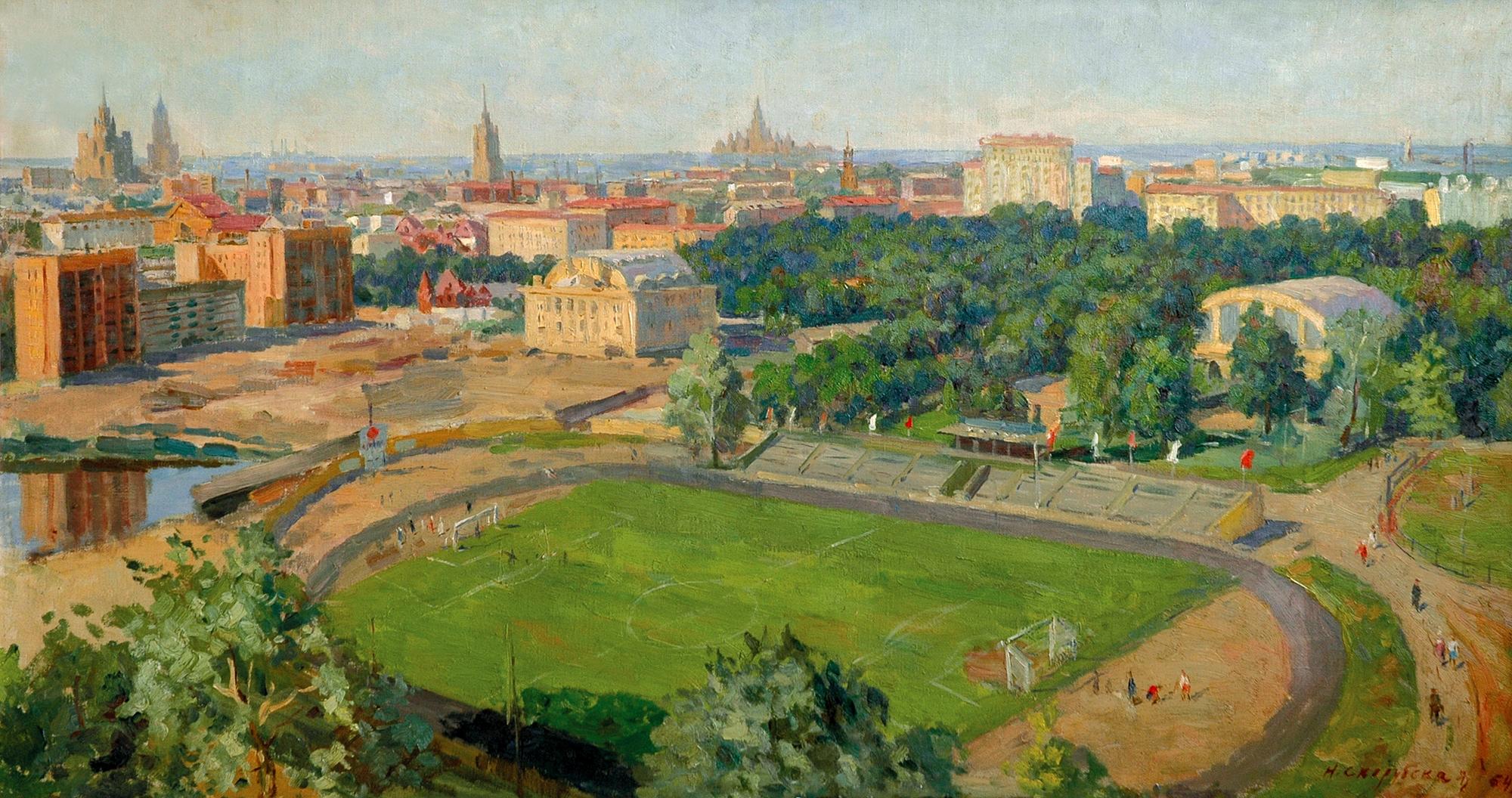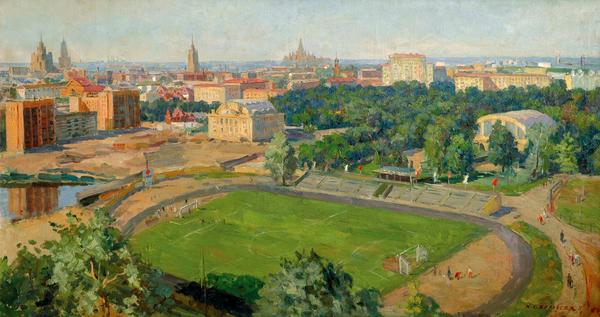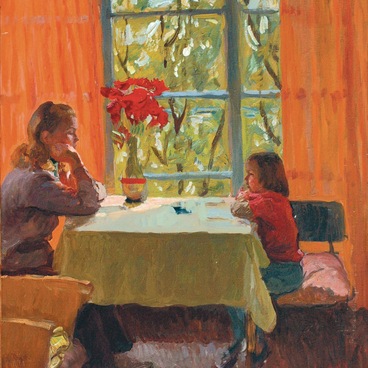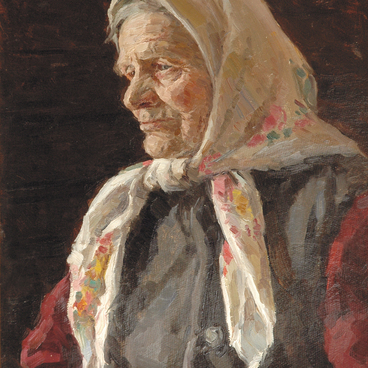Nina Skorubskaya was involved in artistic endeavours her entire life. She attended the art studio of the Mogilev House of Pioneers when she was still at school, and in 1938, she was accepted into the Faculty of Art at the Moscow State Textile Institute. In 1941, she went on to study in the Ceramics Department of the Institute of Decorative and Applied Arts.
However, it was painting that would become Skorubskaya’s lifetime passion, largely thanks to the lessons of the artist Robert Falk. He was one of the many professors of art universities that were evacuated to Samarkand during the World War II in 1943. It was on Falk’s advice that Skorubskaya started to focus on landscape painting. Later, in 1948, she went to the Academic Dacha creative centre of Russia’s Union of Artists, where she had a rare opportunity to study painting seriously. “Rubbing shoulders with so many experienced artists really helped me determine my future creative path”, Skorubskaya wrote about her stay at the Academic Dacha.
In Moscow, she had a workshop in the Artists’ Town architectural complex in the Airport District. Construction of the complex started in the late 1920s at the initiative of Igor Grabar and Maxim Gorky. The idea was to house the workshops and apartments for painters, graphic artists and sculptors. When complete, the buildings were supposed to look like a huge ‘ship of arts.’ The complex was also supposed to have a nursery and a canteen club. Only four buildings were built in the end, and further construction was halted after the Second World War for a number of reasons.
In the painting Dynamo Stadium, Skorubskaya depicted a view from the window of her studio in the Artists’ Town. This is what the stadium looked like in 1964: a huge green field with football markings, two gates and one stand. There are no walls and no giant lanterns around the stadium. Moscow city centre, with the recognizable profiles of Stalin’s high-rise buildings, stretches out into the background. Today, Dynamo Stadium looks quite different — it is a huge sports arena that hosts world-class events.
However, it was painting that would become Skorubskaya’s lifetime passion, largely thanks to the lessons of the artist Robert Falk. He was one of the many professors of art universities that were evacuated to Samarkand during the World War II in 1943. It was on Falk’s advice that Skorubskaya started to focus on landscape painting. Later, in 1948, she went to the Academic Dacha creative centre of Russia’s Union of Artists, where she had a rare opportunity to study painting seriously. “Rubbing shoulders with so many experienced artists really helped me determine my future creative path”, Skorubskaya wrote about her stay at the Academic Dacha.
In Moscow, she had a workshop in the Artists’ Town architectural complex in the Airport District. Construction of the complex started in the late 1920s at the initiative of Igor Grabar and Maxim Gorky. The idea was to house the workshops and apartments for painters, graphic artists and sculptors. When complete, the buildings were supposed to look like a huge ‘ship of arts.’ The complex was also supposed to have a nursery and a canteen club. Only four buildings were built in the end, and further construction was halted after the Second World War for a number of reasons.
In the painting Dynamo Stadium, Skorubskaya depicted a view from the window of her studio in the Artists’ Town. This is what the stadium looked like in 1964: a huge green field with football markings, two gates and one stand. There are no walls and no giant lanterns around the stadium. Moscow city centre, with the recognizable profiles of Stalin’s high-rise buildings, stretches out into the background. Today, Dynamo Stadium looks quite different — it is a huge sports arena that hosts world-class events.





